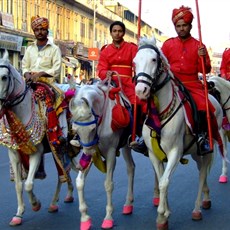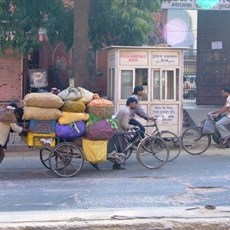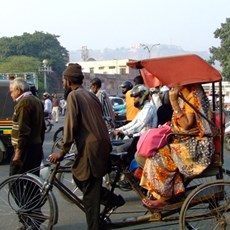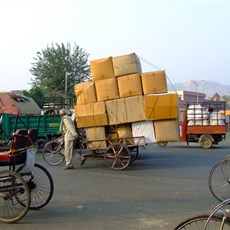2011 Biking Rajasthan
Rajasthan highlights: 1 December 2011
through 14 January 2012
History
India’s history begins 50 million years ago when a large chunk of land
broke away from its home in the southern hemisphere and meandered north until
it collided with the Asian continent, creating the subcontinent of India and a
ring of protective mountains. India
continues to drift north, raising Mount Everest
by 1cm each year.
The subcontinent, comprising modern day Pakistan, India
and Bangladesh, was named
after the Indus River,
which today flows mainly in Pakistan.
The Indus River valley civilization flourished for
1000 years from around 2500BC. It traded with the great civilisations of Egypt and Mesopotamia,
and to date its language has still not been deciphered.
Despite the half-circle of mountains that
cap the subcontinent, India’s
past is littered with immigrations, invasions and trade relations. The Mughal
invaders of the mid-1500s, for example, brought architecture, art, war and
Islam to primarily Hindu India. The British, in the guise of the East India
Company, first “occupied” India
around 1600 through trading posts and agreements with local rulers. In 1858 the
East India Company was abolished and India placed under Crown rule. It
was the British who united for the first time the whole of the subcontinent and
mapped its borders.
At independence in 1947, predominantly
Muslim Pakistan (in two sections separated by 1600km of Indian
territory) split from predominantly Hindu India. Around 12 million
people opted to move from one country to the other. During the two-way
migration, incomprehensible violence and brutality cost an estimated two
million refugees their lives. In 1971, east Pakistan fought a bloody war of
independence which resulted in the creation of Bangladesh.
Rajasthan
In the mid-1800s, when the British
colonised India,
approximately one third of its landmass was ruled by around 600 princes. The
British opted to leave the bulk of these princely states to govern themselves –
provided they “behaved”.
Rajasthani princes were called “Maharaja”
or “great king”. They were a warrior class similar to the knights of Europe, and believed wholeheartedly in the concept of
“death before dishonour”. During successive immigrations and invasions they
managed often to maintain their independence, but were sometimes defeated, and
sometimes incorporated into larger reigning powers. In between, they fought
each other. It was under the British, who to a large extent ended internecine
war, that the Maharajas grew really rich.
When India
claimed her independence from Britain
in 1947, the Maharajas were stripped of their independent powers and domains,
but were paid a “privy purse” by the state and allowed to keep their titles and
property, a right enshrined in the Constitution. When Indira Ghandi in the
early-1970s changed the Constitution and abolished the privy purse, many
maharajas went bankrupt, some entered politics or private business, others
converted their palaces into luxury hotels. Some still perform ceremonial tasks,
act as community leaders and arbitrators in clan disputes, and are viewed as
royalty by ordinary people.
Rajasthan is one of 28 Indian states, and
the largest by area. It lies west of Delhi and
east of Pakistan,
with whom it shares a border. It is cut in two by the Aravelli hills, one of
the oldest mountain ranges in the world, which run from the southwest to the
northeast. It is an arid state, the northwest lying partially in the Thar Desert. In the summer, temperatures sore to over 50
degrees; in the winter, we were more often cold than hot.
Charl and I had planned to cycle 2,000km;
in the end we managed only 1,600km.

Jaipur

Jaipur

Jaipur

Jaipur

Jaipur

Jaipur